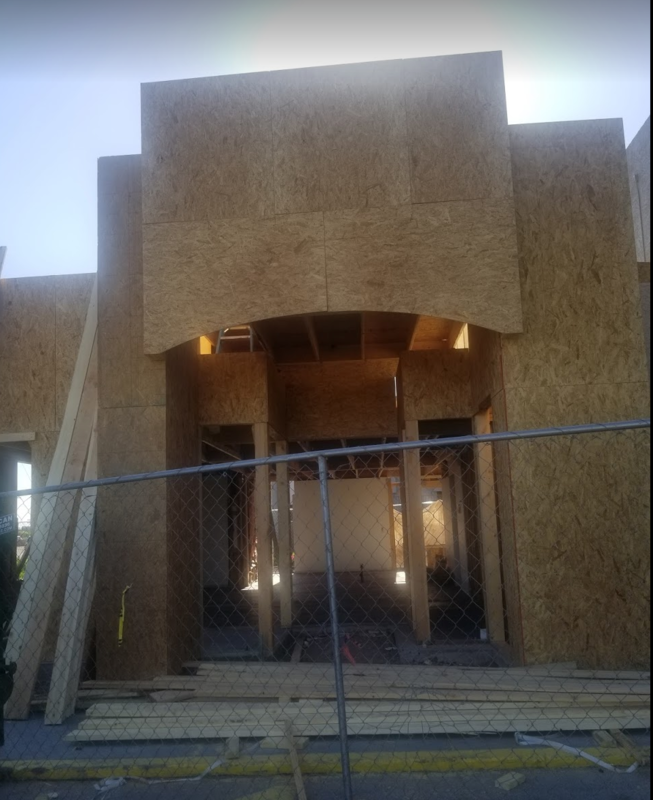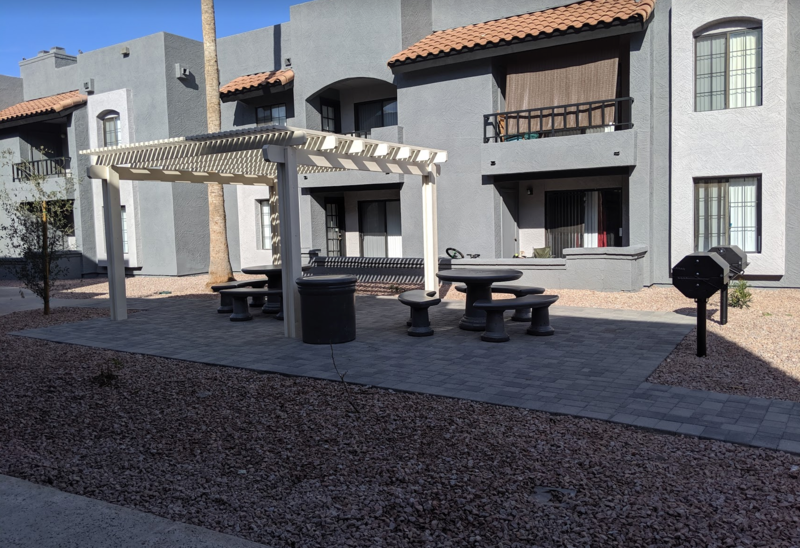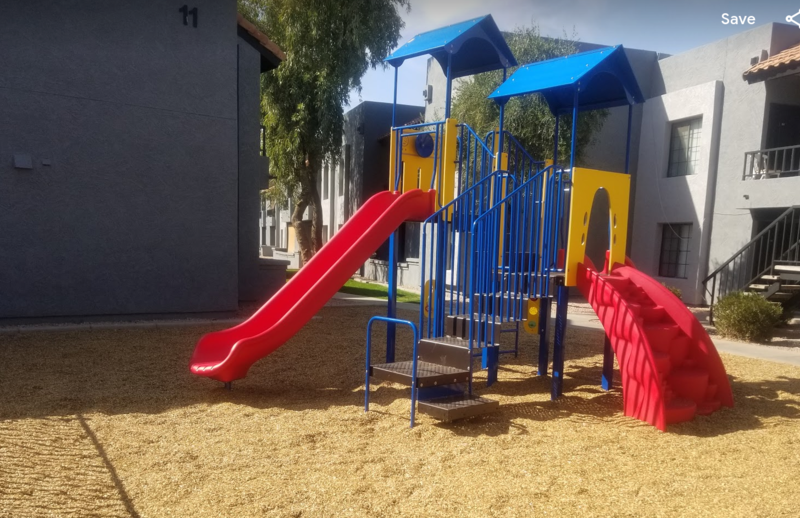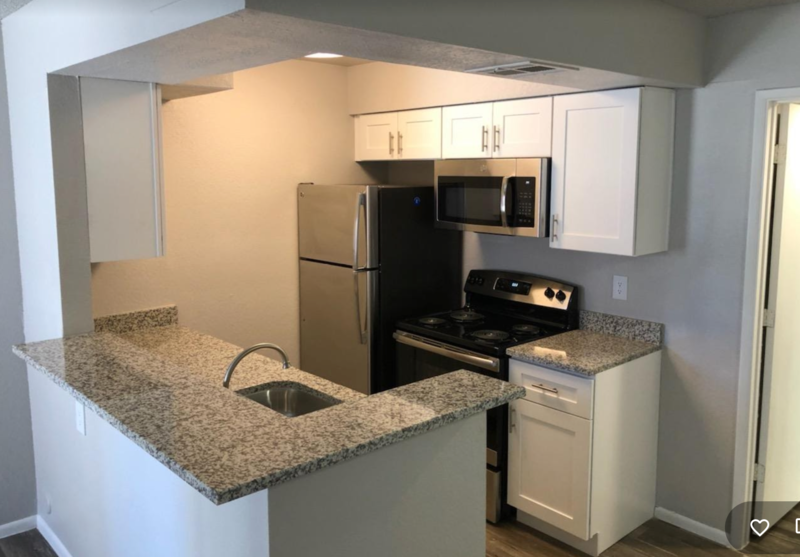All Forum Posts by: Ben Leybovich
Ben Leybovich has started 96 posts and replied 4169 times.
 Post: 117-Unit Value-add in Phoenix Closed Today
Post: 117-Unit Value-add in Phoenix Closed Today
- Rental Property Investor
- Phoenix/Lima, Arizona/OH
- Posts 4,456
- Votes 4,295
Originally posted by @Jamie Oliver:
@Ben Leybovich & @Sam Grooms nice work on this complex! I live in Downtown Phoenix and commute(d) to Chandler pre-coronavirus. Sometimes I bring my gravel bike and ride a loop that includes that canal after work. When I first started I was really surprised and the number of "nice" areas sprinkled throughout the South Mountain area. With easy access to recreation, shopping, Chandler, Tempe, and Downtown this area is sure to continue to explode.
Jamie, I agree. This area is very exciting right now.
 Post: 164-Unit Closed in Phoenix, AZ!
Post: 164-Unit Closed in Phoenix, AZ!
- Rental Property Investor
- Phoenix/Lima, Arizona/OH
- Posts 4,456
- Votes 4,295
 Post: Syndication Investing During a Recession
Post: Syndication Investing During a Recession
- Rental Property Investor
- Phoenix/Lima, Arizona/OH
- Posts 4,456
- Votes 4,295
Originally posted by @Ivan Barratt:
cc @Ben Leybovich
Question: what happens to cap rates in multifamily that's performing well (occupancy, collections, rent growth) through the pandemic AND interest rates are ~150bps lower AND there's 6 trillion more in currency floating around?? My theory: pricing will actually rise as it will with other assets, the stock market, etc.
Yes, there will be some opportunities to pick off poorly executed real estate as well but if anyone is waiting to pick up B property at an 8 cap; they're simply playing the game like it's 2008 again. It's not. This black swan is different. There's an ocean of capital in the world looking for a home!
My All Weather Portfolio:
- 3,500 (and likely growing with more deal flow now!) B+/A- Apartments in the Midwest (Tortoise vs Hare markets with steady growth).
- Operating Company: vertically integrated management firm to execute the biz plan on the apartment portfolio
- CASH
- GOLD - insurance hedge
- Crypto - insurance hedge
- Buying into the S&P for the first time in 20 years. Stock Market "melt up" hasn't happened yet.
@Ivan Barratt - well said. I agree.
 Post: Syndication Investing During a Recession
Post: Syndication Investing During a Recession
- Rental Property Investor
- Phoenix/Lima, Arizona/OH
- Posts 4,456
- Votes 4,295
Originally posted by @Jonathan Twombly:
Originally posted by @Ben Leybovich:
Originally posted by @Jonathan Twombly:
Originally posted by @Ben Leybovich:
Originally posted by @Ivan Barratt:
LOL @Ben Leybovich I love your take. We're "dollar cost averaging" into more apartments as our portfolio is doing quite well here in the midwest. Some smaller investors are skiddish but a lot of our higher net worth families are allocating more into workforce mfam.
@Jonathan Twombly I hope you were putting in the bumpers previously as well. lol. The "strong hands" will be taking the "weak hands" that weren't previously underwriting cushion.
In every market there's opportunity. Discipline is key.
One thing is for certain, Ivan - we need to sit down over a good scotch. That much has been evident for a while, and it's surprising that it hasn't happened yet.
The thing I just don't get is this. @Jonathan Twombly jump in. The guard rails are needed when? When the exposure to the downside is greater than the upside. This should mean that once you've come down far enough, and the exposure to further downside is limited relative to the upside, generally it's time to get aggressive, take the guardrails off, and practice focus investing.
Thus, I could understand you staying on the sidelines the last few years. I did not agree, but I understood that in your opinion the exposure to the downside was to heavy for the potential profit. However, at this time what you are needing to do is to time the bottom at a point where you feel an inversion of risk/reward.
One problem with that is understanding what is the acceptable risk, and this is something I struggle with. Sounds like Ivan is not too sure either. So - what are the hurdles indicative of this reverse in your opinion. I mean aside for seeing pricing like what we saw in 2010. That aside, what do you need to see in order to pull the trigger?
You’re exactly right. The further the market climbs the more conservative you need to be - but this is the opposite of what most people are doing. As the market climbs they loosen their standards to continue to make deals happen. Everyone claims to be underwriting conservatively, but if that were true cap rates would never compress. It’s precisely because the market as a whole justified loosening it’s standards that cap rates compress so much. (Low interest rates are a justification for, not the cause, of cap rate compression.)
At the top of the market, you have to get everything exactly right to have your deals work out as you planned. The looser an investor’s standards get as to what “works,” the greater the deviance from the plan they will end up with. At the extreme, deals bought at the top with too loose standards will go back to the bank.
The average investor’s perception of risk is backwards. When everyone is buying and prices are rising, they perceive risk to be low, which causes more people to jump in, raising prices further, and increasing risk.
Conversely, when the market nears the bottom, the risk is at its lowest. You can be most aggressive at this time. Cap rate compression as the market recovers will hide a lot of sins. You’ll often exceed your underwriting.
But at this point in the cycle, news of the crash is recent. And the casual investor believes risk is high. However, in fact, risk is at its lowest point.
The cap rate tells you everything. When cap rates for the asset in that market are at their cyclical low, risk is highest. When they are at their cyclical high, risk is lowest.
Anyway, that’s my view of things. Others will no doubt differ.
Jonathan - so essentially we agree. The only issue right now is that this conversation is purely theoretical until and unless we start buying again, at which point we will know what the buying criteria are.
It's apparent that you are looking for the bottom. I must assume that you are much too knowledgeable to try to time the cycle, which means you must have hurdles in mind when the risk equation is good enough to deploy.
What are some of these hurdles you are looking for? Are you looking for your markets to trade at certain cap rates? What's that Delta you are looking for relative to 3 months ago? Or, are there other hurdles?
Just trying to understand where a smart investor like you stands. Something concrete...
Thanks!
Of course! You can’t time the absolutely bottom. You can only know it happened in retrospect.
I will be looking for deals where I can pay my investors and 8% pref and 2% to myself from year one without having to do a value add or raise rents aggressively to get there. That where we were in 2013, when I really got traction - several years into the last recovery so not the absolute bottom.
If I’m going to put investor money at risk to do a value add play, then I want to receive a premium in return for the risk. Not like recently, where people were paying the after value add price and then having to take the risk of doing the value add to get to their 8 pref - or maybe just to get to a 6-pref.
Don’t know if we will get there. If we don’t I will have to adjust. But that’s what I will be looking for.
Thank you for that. I understand your perspective now. It'll be interesting to see how things evolve, but clearly for you to achieve those hurdles there will have to be monumental discounts, much like a decade back. In which case, good for all of us.
Let's keep chatting.
 Post: Syndication Investing During a Recession
Post: Syndication Investing During a Recession
- Rental Property Investor
- Phoenix/Lima, Arizona/OH
- Posts 4,456
- Votes 4,295
Originally posted by @Jonathan Twombly:
Originally posted by @Ben Leybovich:
Originally posted by @Ivan Barratt:
LOL @Ben Leybovich I love your take. We're "dollar cost averaging" into more apartments as our portfolio is doing quite well here in the midwest. Some smaller investors are skiddish but a lot of our higher net worth families are allocating more into workforce mfam.
@Jonathan Twombly I hope you were putting in the bumpers previously as well. lol. The "strong hands" will be taking the "weak hands" that weren't previously underwriting cushion.
In every market there's opportunity. Discipline is key.
One thing is for certain, Ivan - we need to sit down over a good scotch. That much has been evident for a while, and it's surprising that it hasn't happened yet.
The thing I just don't get is this. @Jonathan Twombly jump in. The guard rails are needed when? When the exposure to the downside is greater than the upside. This should mean that once you've come down far enough, and the exposure to further downside is limited relative to the upside, generally it's time to get aggressive, take the guardrails off, and practice focus investing.
Thus, I could understand you staying on the sidelines the last few years. I did not agree, but I understood that in your opinion the exposure to the downside was to heavy for the potential profit. However, at this time what you are needing to do is to time the bottom at a point where you feel an inversion of risk/reward.
One problem with that is understanding what is the acceptable risk, and this is something I struggle with. Sounds like Ivan is not too sure either. So - what are the hurdles indicative of this reverse in your opinion. I mean aside for seeing pricing like what we saw in 2010. That aside, what do you need to see in order to pull the trigger?
You’re exactly right. The further the market climbs the more conservative you need to be - but this is the opposite of what most people are doing. As the market climbs they loosen their standards to continue to make deals happen. Everyone claims to be underwriting conservatively, but if that were true cap rates would never compress. It’s precisely because the market as a whole justified loosening it’s standards that cap rates compress so much. (Low interest rates are a justification for, not the cause, of cap rate compression.)
At the top of the market, you have to get everything exactly right to have your deals work out as you planned. The looser an investor’s standards get as to what “works,” the greater the deviance from the plan they will end up with. At the extreme, deals bought at the top with too loose standards will go back to the bank.
The average investor’s perception of risk is backwards. When everyone is buying and prices are rising, they perceive risk to be low, which causes more people to jump in, raising prices further, and increasing risk.
Conversely, when the market nears the bottom, the risk is at its lowest. You can be most aggressive at this time. Cap rate compression as the market recovers will hide a lot of sins. You’ll often exceed your underwriting.
But at this point in the cycle, news of the crash is recent. And the casual investor believes risk is high. However, in fact, risk is at its lowest point.
The cap rate tells you everything. When cap rates for the asset in that market are at their cyclical low, risk is highest. When they are at their cyclical high, risk is lowest.
Anyway, that’s my view of things. Others will no doubt differ.
Jonathan - so essentially we agree. The only issue right now is that this conversation is purely theoretical until and unless we start buying again, at which point we will know what the buying criteria are.
It's apparent that you are looking for the bottom. I must assume that you are much too knowledgeable to try to time the cycle, which means you must have hurdles in mind when the risk equation is good enough to deploy.
What are some of these hurdles you are looking for? Are you looking for your markets to trade at certain cap rates? What's that Delta you are looking for relative to 3 months ago? Or, are there other hurdles?
Just trying to understand where a smart investor like you stands. Something concrete...
Thanks!
 Post: Value Add Case Study (2 Apartment Communities)
Post: Value Add Case Study (2 Apartment Communities)
- Rental Property Investor
- Phoenix/Lima, Arizona/OH
- Posts 4,456
- Votes 4,295
Originally posted by @Ryan Short:
@Ben Leybovich beautiful property and amazing value add numbers. Best strategy in the best asset class in the world. Do you ever have value adds where you renovate and stabilize all units then sell? Or do you always leave meat on the bone for future buyers to add value?
Yes, in fact, Canyon 35 is on the market right now as a proven value add, with 50% of the units still to be completed. I see every acquisition as a mandate to try and maximize the highest risk-adjusted returns to partners. I finance these things in such a way so as to be able to exit at practically any time. If it sells for enough today, I sell. And if not, I hold and try again tomorrow.
 Post: Value Add Case Study (2 Apartment Communities)
Post: Value Add Case Study (2 Apartment Communities)
- Rental Property Investor
- Phoenix/Lima, Arizona/OH
- Posts 4,456
- Votes 4,295
Originally posted by @Zach Quick:
@Ben Leybovich because there is no lipstick on it huh?
See what I mean?! It'll go into posterity :)
 Post: Syndication Investing During a Recession
Post: Syndication Investing During a Recession
- Rental Property Investor
- Phoenix/Lima, Arizona/OH
- Posts 4,456
- Votes 4,295
Originally posted by @Ivan Barratt:
LOL @Ben Leybovich I love your take. We're "dollar cost averaging" into more apartments as our portfolio is doing quite well here in the midwest. Some smaller investors are skiddish but a lot of our higher net worth families are allocating more into workforce mfam.
@Jonathan Twombly I hope you were putting in the bumpers previously as well. lol. The "strong hands" will be taking the "weak hands" that weren't previously underwriting cushion.
In every market there's opportunity. Discipline is key.
One thing is for certain, Ivan - we need to sit down over a good scotch. That much has been evident for a while, and it's surprising that it hasn't happened yet.
The thing I just don't get is this. @Jonathan Twombly jump in. The guard rails are needed when? When the exposure to the downside is greater than the upside. This should mean that once you've come down far enough, and the exposure to further downside is limited relative to the upside, generally it's time to get aggressive, take the guardrails off, and practice focus investing.
Thus, I could understand you staying on the sidelines the last few years. I did not agree, but I understood that in your opinion the exposure to the downside was to heavy for the potential profit. However, at this time what you are needing to do is to time the bottom at a point where you feel an inversion of risk/reward.
One problem with that is understanding what is the acceptable risk, and this is something I struggle with. Sounds like Ivan is not too sure either. So - what are the hurdles indicative of this reverse in your opinion. I mean aside for seeing pricing like what we saw in 2010. That aside, what do you need to see in order to pull the trigger?
 Post: Syndication Investing During a Recession
Post: Syndication Investing During a Recession
- Rental Property Investor
- Phoenix/Lima, Arizona/OH
- Posts 4,456
- Votes 4,295
Originally posted by @Jonathan Twombly:
Originally posted by @Ben Leybovich:
Originally posted by @Jonathan Twombly:
Originally posted by @Greg Dickerson:
So, I guess I'd like to know what you guys are doing now? I know you were waiting before because the market was too high. Are you basically still waiting?
I know I am not the smartest tack in the box, so I guess no one should be surprised at my inability to time the market. But that's exactly it - I have no idea how to time the market. I am eagerly watching you guys and hoping to learn.
In the meantime, if the deal is good enough, it's good enough. And if the one tomorrow is even better then I'll buy that one too.
Hey Ben! Basically, I am reinvigorating all of my lender, broker, manager, and investor contacts and letting them know what I am looking for. You're right that, if a deal works, it works. However, I am putting a lot of bumpers on the deals, underwriting in a lot more uncertainty and margin of safety, so that I know the deal can withstand bad times. Basically, being very cautious. But also getting ready for when things stabilize and I can predict what the next couple of years look like with more accuracy. Whereas, I was on on the sidelines before, now I am no longer on the sidelines. Don't know if I will buy yet, but I am getting ready for the opportunities that I think are coming.
It's certainly an interesting time, Jonathan. The Devil is in - what's it mean when "things stabilize"?
As you know, in Phoenix, you couldn't get a deal at 5 cap four months ago. Everything was sub-5.
I spoke to one of the biggest brokers in town yesterday. 4 weeks ago a bunch of investors decided that the market was only worth 6 cap. They tried. This week offers are coming in at 5.5 cap. Still nothing. Where will the psychology be a month from now?
In the meantime, I lost a deal last week. I suppose coming into Phoenix out of Seattle is all the visibility the buyer need...
 Post: Value Add Case Study (2 Apartment Communities)
Post: Value Add Case Study (2 Apartment Communities)
- Rental Property Investor
- Phoenix/Lima, Arizona/OH
- Posts 4,456
- Votes 4,295
My wife does all of the interior design for the corporate units. She's got an eye. Just think - she picked me...if that's not good taste I don't know what is :)
The pig has special significance, though.








